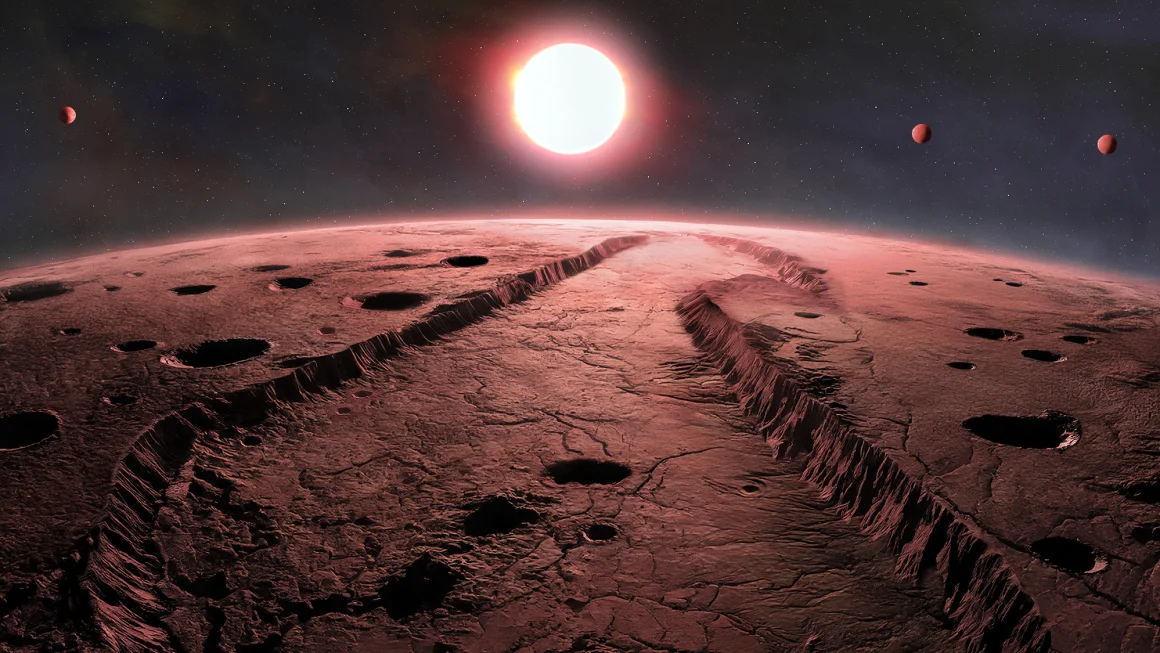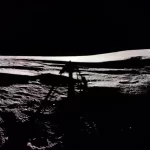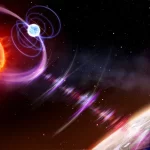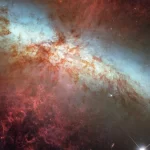After decades of searching, astronomers have uncovered some of the strongest evidence yet of exoplanets orbiting Barnard’s Star, the nearest single star system to Earth. The four planets are classified as sub-Earths because each one is about 19% to 34% the mass of Earth, according to new research.
“It’s a really exciting find — Barnard’s Star is our cosmic neighbor, and yet we know so little about it,” said lead study author Ritvik Basant, doctoral student of astronomy and astrophysics at the University of Chicago, in a statement. “It’s signaling a breakthrough with the precision of these new instruments from previous generations.”
Barnard’s Star, discovered by American astronomer E.E. Barnard in 1916, is a low-mass red dwarf, one of the most common types of stars. Over the past decade, astronomers have found that many of these stars have multiple rocky planets orbiting them.
Using MAROON-X, the study team spotted the least massive exoplanet ever found, and it hopes the find will lead to the discovery of more sub-Earth exoplanets across the cosmos.
Astronomers believe smaller exoplanets may be more varied in composition than the larger exoplanets detected so far. Finding more minuscule worlds with the latest, highly sensitive instruments could open up a new way of understanding how planets form — and which ones could be habitable for life.
Four tiny worlds
The planets are so small that they are more analogous to Mars, according to Basant.
“When compared to our solar system, each of the four planets are inside the distance of Mercury’s orbit,” Basant said.
The planets closely orbit Barnard’s Star, zipping around their stellar host in a matter of days, compared with the year it takes Earth to complete one orbit around the sun. The outermost planet takes less than seven days to complete one orbit, while the innermost planet has an orbital period of less than three days, Basant said.
Proximity at a price
The planets are so close to the star that their surfaces are likely too hot to be habitable.
That means the foursome are also not within the habitable zone of the star, or just the right distance from the star where liquid water can stably exist on the surface of the planet.
“When Barnard’s star was young and active … the star blasted these small planets with X-UV radiation, frequent flares, and dense winds,” said Edward Guinan, professor of astronomy and astrophysics at Villanova University in Pennsylvania, in an email. “Because of this, these sub-Earth size planets probably don’t have atmospheres, water, and life.”
Guinan was not involved in the new study but has previously searched for planets around Barnard’s Star.
Planets of this size are largely unexplored beyond our solar system, making it a significant step forward as astronomers search for Earth-mass planets around sun-like stars, Basant said.
“A lot of what we do can be incremental, and it’s sometimes hard to see the bigger picture,” said study coauthor Jacob Bean, a professor in the University of Chicago’s department of astronomy and astrophysics. “But we found something that humanity will hopefully know forever. That sense of discovery is incredible.”
The search for nearby planets
While the Proxima Centauri system is the closest to our solar system at a distance of 4.25 light-years away, it comprises three stars circling one another, making Barnard’s Star the nearest single star system.
Now, astronomers know that planets orbit the two closest star systems to our solar system.
Barnard’s Star has served as a kind of white whale for astronomers over the decades as they have tried to find evidence of planets orbiting it, only to be disproven as false positives later, “likely due to the limited sensitivity of earlier instruments,” Basant said.
Many exoplanets have been discovered as they transit, or pass in front of, their host star, creating an observable dip in starlight suggesting the presence of a planet.
But the elusive planets orbiting Barnard’s Star do not transit, meaning they don’t pass in front of their star from the perspective of telescopes on Earth and can’t be detected with powerful space observatories like the James Webb Space Telescope.
The research team, led by Bean, captured data from Barnard’s Star over the course of 112 nights spanning a period of three years. The data showed evidence for three planets orbiting Barnard’s Star, two of which had been previously suggested as potential planets.
The researchers then combined their findings with data captured using the ESPRESSO instrument on the Very Large Telescope in Chile by a different team that authored an October 2024 study. The combined dataset confirmed the existence of a fourth exoplanet.










